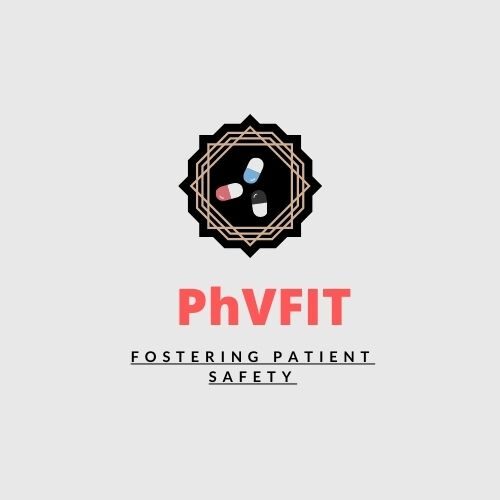Thalidomide disaster
Incident that laid the foundation of Pharmacovigilance
In 1957, a drug was marketed as a safe sedative by a German company. They advertised their product as “completely safe” for everyone, including mother and child, “even during pregnancy,” as its developers “could not find a dose high enough to kill a rat.” By 1960, it was marketed in 46 countries, with sales nearly matching those of aspirin.
Around this time, Australian obstetrician Dr. William McBride discovered that the drug also alleviated morning sickness. He started recommending this OFF-LABEL use of the drug to his pregnant patients, setting a worldwide trend.
In 1961, a lot of reports about birth defects started coming in from all over the world. As Dr. McBride dug deeper, he began to associate this so-called harmless drug with severe birth defects in the babies he delivered. The drug interfered with the babies’ normal development, causing many of them to be born with phocomelia, resulting in shortened, absent, or flipper-like limbs.

What followed was the biggest man‐made medical disaster ever, where numberless miscarriages happened and over 10,000 children were born with a range of severe and debilitating malformations.
.
Can you guess the drug?
Yes, the drug is thalidomide. A drug that caused the biggest man-made disaster where more than 10,000 children were born with deformities all over the world.
But do you know the tragedy was largely averted in United States – thanks to FDA inspector Frances Kelsey, who prevented the drug’s approval within the United States despite pressure from the pharmaceutical company and FDA?
-The application for thalidomide contained incomplete and insufficient data on its safety and effectiveness.
-The lack of data indicating whether the drug could cross the placenta, which provides nourishment to a developing fetus.
-There were not yet any results available from U.S. clinical trials of the drug. Even if these data were available, they may not have been entirely reliable as then clinical trials did not require FDA approval. The trial in US involved distribution of 2.5 m tablets to 20000 patients but the results and AEs were not tracked by physicians.
Due to her stand, the tragedy was largely averted, and she subsequently was given a distinguished service award by President JFK.
The tragedy and crisis laid the foundation of present-day Pharmacovigilance.
Thalidomide was banned in most countries by March 1962.
The book “The power of habit” talks about the “power of crisis”:
Great leaders make crisis in a business/ process an opportunity for bringing in transformational changes in the organization.
The crisis in drug safety led to strict legislations- that immediately followed the Thalidomide disaster and laid the foundation of PV:
– The whole regulatory system was re-shaped in the UK where a Committee on the Safety of Drugs (CSD) was started in 1963 followed by a voluntary adverse drug reaction reporting system(Yellow Card Scheme) in 1964.
– In the United States, the Drug Amendments Act of 1962 was passed by Congress requiring the FDA to approve all new drug applications (NDA) and, for the first time, demanded that a new drug should be proven to be effective and safe. Of equal importance, the FDA was also given the authority to require compliance with current Good Manufacturing Practices (GMP), to officially register drug establishments and implement other requirements. The EEC Directive 65/65/EEC on the approximation of provisions laid down by law, regulation and administrative action relating to medicinal products was also induced by the thalidomide disaster.
In 1965, Thalidomide was re-marketed in several countries for erythema nodosum leprosum (ENL) and cases of thalidomide deformities have re-emerged.
This is specially in Brazil where leprosy cases are maximum, and the drug is used widely.
Schuler-Faccini and other researchers from the Universidade Federal do Rio Grande do Sul in Porto Alegre looked at the birth records of 17.5 million babies born between 2005 and 2010.
They looked at all children with limb defects and those with the characteristic defects of Thalidomide and compared the distribution of Thalidomide tablet with the number of limb defects and found a direct correlation.
“The bigger the amount of pills in each state the higher the number of limb defects.”
In the same 2005-2010 period, 5.8 million Thalidomide pills were distributed across Brazil and about 100 known cases were reported in these six years similar to Thalidomide syndrome.
Several thalidomide babies continue to be born each year!
Between 2015 and 2018, 5 new cases of use of thalidomide during pregnancies were reported to the Mohr and ANVISA.
Reason?
Regulatory insufficiency, self-medication, and widespread use under inadequate supervision.
Are we learning from our errors?
References:
- Northwestern Unitvesity research center, accessed 21 May 2021, <https://helix.northwestern.edu/article/thalidomide-tragedy-lessons-drug-safety-and-regulation>
- World Health organisation, accessed 21 May 2021 https://www.who.int/medicines/technical_briefing/tbs/Drug_Regulation_History_Present_Future.pdf
- BBC, accessed 21 May 2021, <https://www.bbc.com/news/magazine-23418102>
